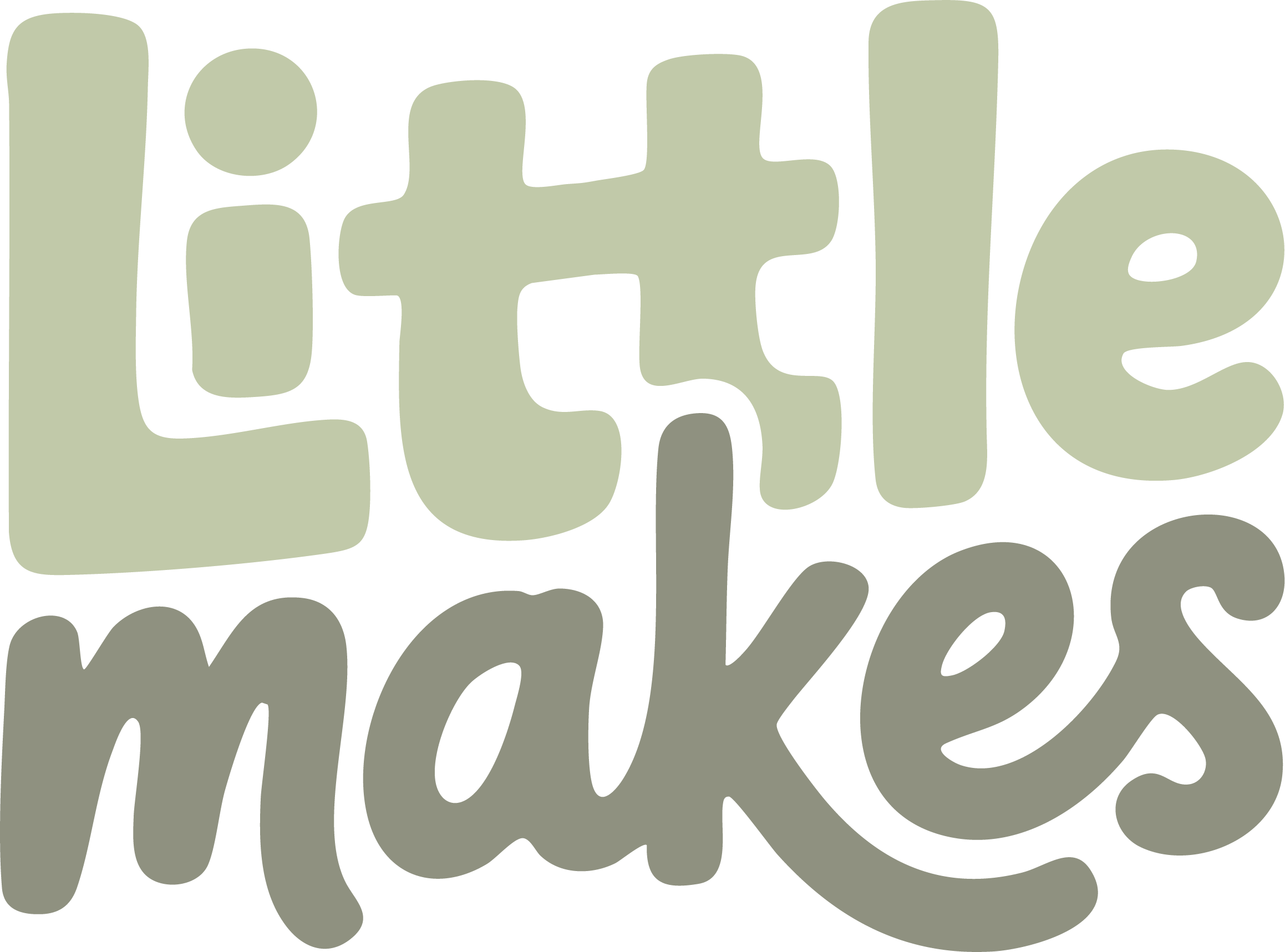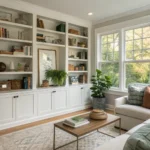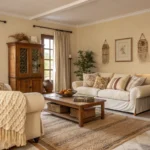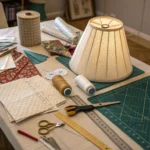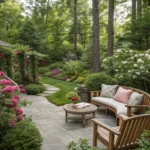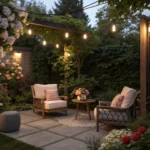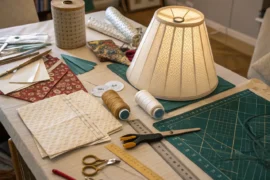Transform everyday glass bottles into stunning minimal vases that bring sustainable elegance to your living spaces while reducing environmental waste.
Why Glass Bottle Upcycling Matters

As an interior professional, I’ve witnessed firsthand how homeowners increasingly seek meaningful ways to reduce their environmental footprint without compromising aesthetics. Upcycling glass bottles addresses multiple contemporary concerns: waste reduction, cost-effectiveness, and the growing demand for personalized home décor that tells a story.
Glass bottles offer exceptional advantages over other materials for flower displays. Scientific studies confirm that glass containers, compared to plastic alternatives, provide superior conditions for cut flowers due to their non-reactive, smooth surface that prevents bacterial interference with water uptake. This makes upcycled glass bottles not just environmentally responsible but functionally superior for floral arrangements.
Key Benefits:
- Environmental Impact: Each upcycled bottle prevents landfill waste and reduces demand for new glass production
- Cost Efficiency: Transform free materials into designer-quality vases worth $15-50 each
- Customization: Create pieces perfectly suited to your home’s aesthetic
- Durability: Glass vases last indefinitely with proper care
Essential Safety Equipment and Preparation

Before beginning any glass cutting project, proper safety preparation is non-negotiable. The glass industry maintains strict safety protocols that home crafters must follow.
Required Personal Protective Equipment (PPE)
Mandatory Safety Gear:
- Cut-resistant gloves (minimum ANSI Level A3 for glass handling)
- Safety goggles with side protection
- Long-sleeved clothing covering arms completely
- Closed-toe shoes with reinforced protection
- Dust mask when sanding or grinding
Workspace Setup
Your workspace significantly impacts both safety and success. Choose a well-ventilated area with stable surfaces and adequate lighting.
Essential Workspace Elements:
- Flat, stable work surface at comfortable height
- Good ventilation for dust and glass particle removal
- Proper lighting to clearly see cutting lines
- Drop cloths to contain glass fragments
- First aid kit readily accessible
- Waste containers for safe glass disposal
I always recommend practicing on bottles you’re willing to discard initially. This builds confidence and muscle memory for proper handling techniques before working on bottles destined for your finished displays.
Glass Cutting Techniques and Methods
Professional glass cutting requires understanding the fundamental principle: scoring creates controlled fracture points rather than attempting to slice through material.
Method 1: Thermal Shock Technique
This method uses temperature differential to create clean breaks along scored lines.
Step-by-Step Process:
1. Clean the bottle thoroughly, removing all labels and residue
2. Mark cutting line with masking tape for precision
3. Score the glass using a quality glass cutter with consistent pressure
4. Apply heat by pouring hot water along the score line
5. Immediate cooling by immersing in cold water
6. Separate pieces with gentle pressure if needed
Success Tips:
- Maintain consistent scoring pressure throughout the circumference
- Ensure score line meets precisely where it begins
- Temperature differential of 40-50°F works optimally
Method 2: Professional Glass Cutter Tool
Specialized bottle cutters provide more controlled, repeatable results.
Equipment Needed:
- Adjustable bottle cutter (available $15-25 online)
- Hot and cold water sources
- Medium and fine-grit sandpaper
- Heat-resistant gloves
The cutting process involves securing the bottle in the cutter, making one complete rotation to score, then applying thermal shock. Professional-grade cutters accommodate various bottle sizes and ensure consistent results.
Edge Finishing and Safety
Raw cut edges require careful finishing for both safety and aesthetics.
Finishing Process:
1. Coarse sanding (100-grit) to remove sharp edges
2. Progressive refinement through 220, 400, and 600-grit papers
3. Final polishing with fine steel wool or polishing compound
4. Quality check by running fingers along edges (wearing gloves)
Properly finished edges should feel smooth and show slight rounding under magnification. This step transforms dangerous sharp glass into safe, professional-quality vases.
Design Principles for Minimal Flower Displays

Minimal floral design requires understanding fundamental principles that create maximum visual impact with restrained elements.
The Foundation: Color Theory in Minimal Arrangements
Color selection drives the emotional response of minimal displays. I consistently apply professional color theory principles to guide flower and vessel selection.
Optimal Color Approaches:
- Monochromatic schemes: Various shades of single hues create sophisticated unity
- Neutral palettes: Whites, creams, and soft greens provide timeless elegance
- Analogous combinations: Adjacent colors on the color wheel ensure harmony
- Single accent colors: One bold element against neutral background creates focal points
For minimal arrangements in upcycled bottles, I recommend limiting color palettes to 2-3 hues maximum. This restraint allows each element—bottle, flower, and setting—to contribute meaningfully to the overall composition.
Proportion and Scale Guidelines
Professional proportion relationships ensure visual balance between container and contents.
Key Proportion Rules:
- Flower height: Approximately 1.5-2 times bottle height for elegant proportions
- Stem count: 3-7 stems maximum for true minimal aesthetic
- Visual weight: Balance between bottle mass and floral mass
- Negative space: Maintain 40-60% empty space for minimal impact
Structural Support Without Floral Foam
Modern sustainable floristry has moved beyond traditional floral foam due to environmental concerns. Professional alternatives provide excellent support while maintaining eco-friendly principles.
Sustainable Support Options:
Flower Frogs/Kenzans:
- Metal pin holders that secure stems precisely
- Reusable for decades with proper care
- Ideal for 1-3 stem minimal arrangements
Chicken Wire Technique:
- Create small ball of fine mesh wire
- Insert into bottle opening for stem guidance
- Completely reusable and recyclable
Natural Weight Systems:
- Clean pebbles or sand for bottle stability
- Decorative stones that complement design aesthetic
- Provides weight while supporting stems
Flower Selection and Preparation

Choosing appropriate flowers transforms simple upcycled bottles into professional-quality displays.
Best Flowers for Minimal Displays
Single Statement Stems:
- Peonies: Full blooms provide dramatic focal points
- Orchids: Architectural forms suit minimal aesthetics
- Branches: Flowering quince, forsythia, or cherry blossoms
- Tulips: Clean lines and variety of colors
Multiple Stem Compositions:
- Eucalyptus: Silvery foliage creates textural interest
- White roses: Classic elegance in any setting
- Dried grasses: Add movement and natural texture
- Pussy willows: Seasonal interest with minimal maintenance
Professional Flower Preparation
Proper preparation extends vase life significantly.
Essential Preparation Steps:
1. Cut stems at 45-degree angle under running water to maximize surface area
2. Remove lower leaves that would sit below waterline to prevent bacterial growth
3. Immediate water placement prevents air bubbles in stem channels
4. Trim regularly every 2-3 days to maintain water uptake
Water Quality and Additives:
- Clean, fresh water changed every 2-3 days
- Commercial flower food or homemade solution (1 tsp sugar, few drops bleach, 1 tsp lemon juice per quart)
- pH optimization between 3-5 for maximum flower longevity
Styling and Placement Strategies

Strategic placement amplifies the impact of minimal displays throughout your home.
Room-by-Room Applications
Living Spaces:
- Console tables: Single tall bottle with architectural branch
- Coffee tables: Low, wide bottles with cluster arrangements
- Shelving: Vary heights with 2-3 bottles of different sizes
- Window sills: Utilize natural light to enhance glass transparency
Kitchen and Dining:
- Island centerpieces: Low profiles maintain conversation sight lines
- Windowsill herbs: Functional and beautiful fresh herb displays
- Open shelving: Integrate with dishes and glassware for cohesive aesthetic
Bedroom and Bath:
- Bedside tables: Small bottles with single blooms
- Bathroom vanities: Moisture-loving plants in smaller vessels
- Dressing areas: Tall bottles with minimal arrangements
Creating Visual Clusters
Group arrangements follow professional design principles for maximum impact.
Effective Grouping Strategies:
- Odd numbers: Groups of 3, 5, or 7 create dynamic visual interest
- Height variation: Stagger heights for depth and movement
- Color repetition: Echo colors across multiple vessels for unity
- Texture contrast: Combine smooth bottles with textured natural elements
I recommend starting with three bottles of different heights and gradually expanding your collection. This approach allows you to understand how pieces interact before investing in larger groupings.
Maintenance and Longevity
Proper maintenance ensures your upcycled vases and arrangements remain beautiful for years.
Vase Care and Cleaning
Regular Maintenance:
- Daily water checks and top-offs as needed
- Weekly deep cleaning with warm soapy water
- Monthly inspection for chips or damage
- Immediate attention to any cloudiness or odors
Deep Cleaning Process:
1. Empty completely and rinse with warm water
2. Scrub interior with bottle brush and mild detergent
3. Remove mineral deposits with white vinegar solution
4. Final rinse with distilled water for spot-free finish
5. Air dry completely before next use
Extending Cut Flower Life
Professional techniques can double or triple flower longevity.
Advanced Preservation Methods:
- Stem recutting: Fresh 45-degree cuts every 2-3 days under running water
- Leaf management: Remove any foliage showing signs of decay immediately
- Water quality: Change completely rather than just topping off
- Environmental control: Keep away from heat sources and direct sun
Troubleshooting Common Issues:
- Premature wilting: Usually indicates bacterial growth or air bubbles in stems
- Short lifespan: Often caused by poor water quality or inadequate preparation
- Drooping flowers: May require stem rehydration through warm water treatment
Seasonal Considerations and Variations
Adapting your minimal displays to seasonal rhythms keeps your home feeling fresh and connected to natural cycles.
Spring and Summer Approaches
Fresh Growth Season:
- Garden cuttings: Utilize blooms from your own plants
- Longer-lasting varieties: Chrysanthemums, carnations, and alstroemeria
- Branching elements: Flowering fruit trees and ornamental shrubs
- Light, airy compositions: Emphasize growth and renewal themes
Fall and Winter Adaptations
Preservation and Warmth:
- Dried materials: Seed pods, branches, and preserved foliage
- Evergreen elements: Pine, cedar, and holly for lasting displays
- Warm color palettes: Rich browns, deep reds, and golden tones
- Textural interest: Incorporate natural materials like pinecones or berries
Remember that perfection comes with practice. Your first attempts may not match professional results, but each project builds skills and confidence. The most important element is beginning—transforming that first bottle from waste into beauty sets you on a path toward more sustainable, creative living that benefits both your home and our planet.
